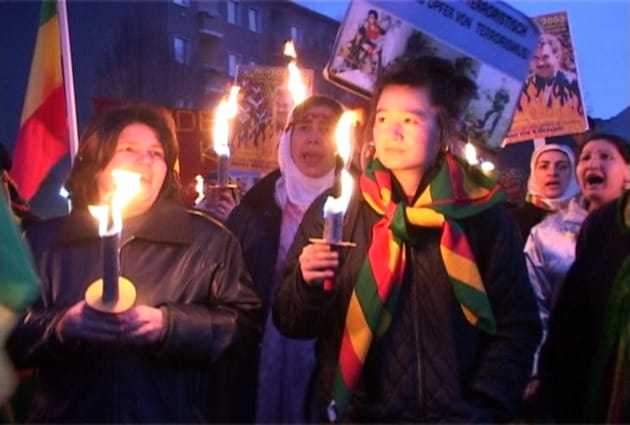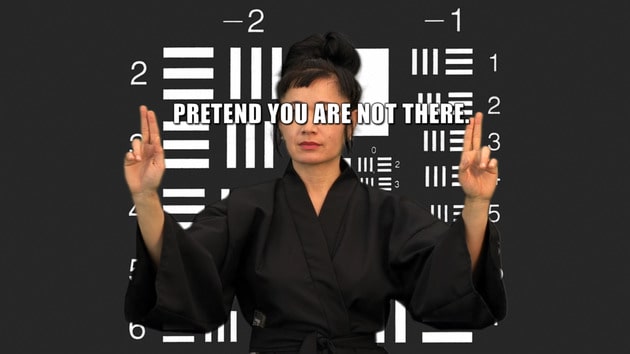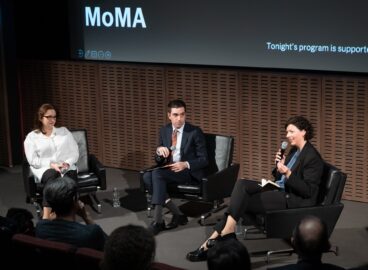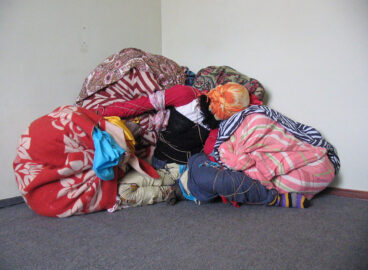A major new publication, Art and Theory of Post-1989 Central and Eastern Europe: A Critical Anthology, presents key voices of this period that have been reevaluating the significance of the socialist legacy, making it an indispensable read on modern and contemporary art and theory. The publication offers a rich collection of texts and an additional, reexamining perspective to its 2002 sister publication, A Sourcebook for Eastern and Central European Art since the 1950s, part of MoMA Primary Documents publications. For this new book, a series of conversations were commissioned with artists in the region and members of the C-MAP research group for Central and Eastern Europe at MoMA. The following is one of those dialogues, with the book’s two principal editors, Roxana Marcoci and Ana Janevski, and the artist Hito Steyerl.

Ana Janevski: 1989 is not only considered a pivotal year in the reconfiguration of the world political order, it’s often seen as a threshold for all sorts for interrelated social and cultural transformations, the “turn of turns,” as it were. To wit, in your book Too Much World [2014], you take 1989—specifically the Romanian uprising that year, when protesters invaded the state TV studios—as the symbolic beginning of a new visual order. Tell us more about the connections you see between those events and today.
Hito Steyerl: After following the Romanian revolution on TV, Vilém Flusser developed the concept of images that do not record a given situation but which project an expected situation. In 1990 he wrote, “It is the image that now triggers events.”1Vilém Flusser, “Fernsehbild und politische Sphäre,” in Von der Bürokratie zur Telekratie. Rumänien im Fernsehen, ed. Keiko Sei (Berlin: Merve 1990), 112. Since then, it has become clear that images do trigger politics, especially images on TV and social media, where formatted data attract followers and create momentum. We neglect this aspect at our own risk: it has been a potent mechanism for populist forces lately. Whatever is circulated on monopolist social-media platforms is, to a certain extent, formatted by algorithms that privilege certain kinds of “content,” creating zones of visibility and invisibility. It is interesting right now to compare the discourse around “fake news” on social media and some TV networks with the memory of state propaganda TV in socialist Romania. I am not saying this is the same—obviously, it is definitely not. But contemporary forms of media are also creating a new set of major social problems in relation to propaganda, censorship, and disinformation, this time on a much wider scale. So will anyone storm Facebook, VKontakte, or Weibo as they stormed the state TV studios during the Romanian revolution? If so, who? Putschists? Protesters? The organized right wing? It is extremely interesting to rewatch [Harun] Farocki and [Andrei] Ujicǎ’s Videograms of a Revolution from this perspective today, because it clearly shows that the storming of the Romanian TV studios was an extremely conflicted event on many levels.
AJ: What about the era before the turning point of 1989, specifically the experience of socialist internationalism—is that important for the current moment, whether in terms of solidarity, people’s struggle for decolonization, alternative routes of cultural exchange, or . . .?
HS: Socialist internationalism was tied both to Industrial Age ideas of workerism and, in most places, to authoritarian top-down modes of governance. Thus, in order for it to make any sense today, it needs to be completely reimagined. It’s like asking: do we still need boats after the Titanic sank? Sure, people do need some sort of flotation device, or some might literally drown, but to build the Titanic anew will not help. Spare parts have been discontinued, and the factory itself turned into a launch support for the oligarch-financed colonization of Mars, staffed by robots.

Roxana Marcoci: Eastern Europe, of course, is part of the global contemporary art scene, perhaps now more so than ever. Given the technological conditions of globalization, would you say that the constant, often undiscerning production—of images, soundbites, texts—leads to further accelerated consumption, in a trajectory we can trace to the late seventeenth century, or are we now in a different place entirely, within an entropic bazaar where the cultural consumer can no longer assimilate culturally or discerningly engage sociopolitically, thus foreclosing the utopian side of commodity production?
HS: If the contemporary art world were a bazaar, that would be great. It would be a market woven by human relations in which people from many walks of life talk to one another and communicate. I would love it if the art world were similar to a čaršija or a souk, and in some parts, it is. But the situation you describe relates to a different part of the art world, which works more like an entropic mall, now constituted to a certain extent by postdemocratic govcorps (government-corporations). Another aspect of this is the mega art fair, with only corporation-size galleries left, booths soon to be manned by bot attendants and stupid AI’s—thus completely eradicating the type of bazaar where traders actually talk to people and the market is created through such human interaction. But cultural consumers will remain, albeit as unemployed populations who need to be pacified through entertainment. And there will always be something interesting, even if it’s not called art, because, after all, humans are curious and imaginative beings.
RM: In nearly all its operational spheres, art in the global age remains defined and prescribed by white masculinist hegemony. Do you find critique, and especially social critique (the art not governed like that, according to Michel Foucault), still an effective way to challenge authorial authority?
HS: Critique is fine, as such; negativity is necessary. But clearly the para-academic habit of “critique” has, within the past few decades, turned into ritual nagging, without any consequences except infighting and division. Let me explain: in specific environments with specific social rules, critique might actually do something. It might act like a contract or software that sets certain actions—change or improvement—in motion. But this environment does not exist (if it ever existed). Critique only becomes active if it is embedded into some kind of social relations that could enforce or at least encourage consequences. This clearly does not apply to most power structures today, which simply couldn’t care less.
So as a kind of dystopian substitute, the habit of critique has, in many cases, deteriorated into shaming and blaming, creating constant purging and fragmentation. Since this type of critique is powerless in relation to power, it starts punching down or sideways. It sometimes manifests as a self-victimization that reeks of entitlement, like a vicious derivative of guilt-driven puritanism. Social media are playing a large part in this development. I think that the most radical and unusual step would not be unlimited further critique, but if for once a couple people agreed on something and focused on building structural agreement among one another.
RM: You ended your text Kobanê Is Not Falling [2014] with a question: “What is the task of art in times of emergency?” What does it mean to be an artist today—in the context of increasing isolationism (Brexit, “America First” foreign policy), the global resurgence of far-right movements, reprisals against minorities, and a relentless drive to expand global capitalism?
HS: In the text you mention, I never answered my own question for a reason. Many of the so-called solutions put forth by the art field during the last twenty years or so, all the big proposals and pretentions, mainly led to grotesquely bloated corporate shows and the “blockbustering” of permanent failure. This is a dead end. Maybe first of all one could just scale back exaggerated expectations and realize that art, after all, is not that important. Maybe what art can do now is what it is best at: look, listen, and interpret with precision, imagine without compromise or fear. But also without being instrumentalized to ever more grandiose ends. This just leads to endless frustration, toxic moralizing, and deadlocks. Deflating art’s pretentions, its blockbusterism, its megalomaniac delusions about its own power would be a first step.
- 1Vilém Flusser, “Fernsehbild und politische Sphäre,” in Von der Bürokratie zur Telekratie. Rumänien im Fernsehen, ed. Keiko Sei (Berlin: Merve 1990), 112.


